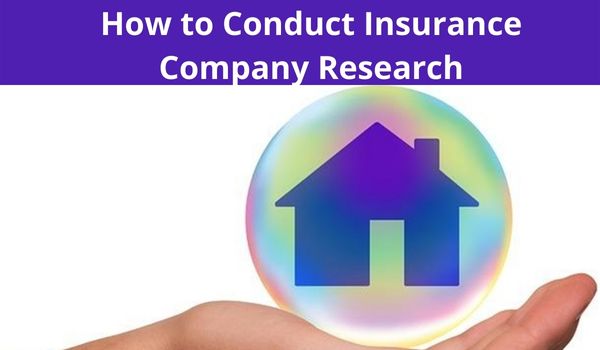How to Conduct Insurance Company Research
Before you get insurance, you need to understand how insurance firms operate. To assist you in comprehending, we have fully explained the insurance company's business model based on internet research and conversations with certain professionals who work in the professional insurance area. Let's split down the model into its constituent parts:
Investing and underwriting
Underwriting and investing in claim marketing
In broad terms, the insurance companies' business plan is to generate more value in premiums and investment income than is spent on losses while presenting an acceptable price that customers would accept.
The following formula may be used to calculate earnings:
Earnings are calculated as follows: earned premium + investment income - incurred loss - underwriting costs.
Insurance companies make money via two methods:
Underwriting is the process through which insurance firms pick which risks to cover and the number of premiums to charge for accepting those risks.
Investing the premium values acquired
The actuarial science of price pricing, based on statistics and probability to predict the value of future claims within a given risk, is a sophisticated side component of the Insurance Company's business model. Following the pricing determination, the insurance firm will accept or reject the risks via the underwriting procedure.
A basic level of ratemaking includes looking at the frequency and severity of insured obligations and the expected payment average. Companies examine their past data on losses and update it to today's values before comparing it to premiums received for a rate adequacy evaluation. Businesses also employ spending burden and loss ratios. Expressed, grading distinct risk characteristics is accomplished by comparing losses with loss relativities. Insurance with double losses, for example, should charge a premium with a double value. Of course, there is room for more complicated calculations using multivariable analysis and parametric computations, always using data history as inputs to evaluate the likelihood of future losses.
The underwriting profit of a company is the amount of premium value collected after the policy expires, less the amount of paid value on claims. We also have underwriting performance, sometimes known as the combined ratio. This is calculated by dividing the losses and costs by the premiums. If it is more than 100%, we call it underwriting loss; if it is less than 100%, we call it underwriting profit. Remember that the investment component of the company's business model ensures that the company may earn even if underwriting losses occur.
The Float is how insurance firms benefit from their investments
It is the amount received in premiums during a specific period that has yet to be paid out in claims. The asset of the Float begins when the insurance firms receive premium payments and ends when the shares are paid out. Because this is the period throughout which interest is earned.
The insurance firms in the United States specializing in casualty and property insurance had an underwriting loss of $142 billion in the five years ending in 2003 but an overall profit of $68 billion due to the Float. Industry specialists believe it is feasible to constantly benefit from the Float without having an underwriting profit. Of fact, there are several schools of thought on this subject.
Finally, while subscribing to new insurance, keep in mind that in economically poor times, markets have bear tendencies, and insurance firms run away from float investments, causing a need to review the values of the premiums, which implies higher rates. As a result, there is a better time to enroll or renew your insurance policies.
Underwriting cycles describe the varying on-profit and nonprofit eras.
Claims
The actual "product" paid for in the insurance market is claims and loss management, which we might refer to as the manifested utility of insurance firms. Insurance company agents or negotiators may assist customers in filing claims, or the firms can file the claims directly.
Claim adjusters handle many claims and are assisted by records management personnel and data entry clerks in the company's claims department. Claimants are classified according to severity criteria and assigned to claim adjusters. Claim adjusters have varying levels of settlement power based on their expertise and understanding. Following the allocation, an inquiry is conducted with the customer's assistance to see if it is covered under the contract. The inquiry results in a valuation and payment approval for the customer.
The customer might sometimes employ a public adjuster to negotiate arrangements with the insurance companies on his behalf. On more complicated plans where claims are challenging to handle, the client may and usually employs a separate policy add-on called loss recovery insurance to pay the cost of the public adjuster.
Companies try to maintain the standards for customer satisfaction, administrative expenditures, and overpayment leakages while managing claims processing services. Bad faith in insurance is often caused by this equilibrium act, which results in fraudulent insurance practices, a critical risk that organizations collect and overcome.
Client-insurance company disagreements often result in a lawsuit. The increasing difficulties include claims processing methods and claim validity.
Marketing
Insurance companies use negotiation and agents to enter the market and ensure their customers. These negotiators are tied to a single firm or work as freelancers, meaning they may accept regulations and conditions from various insurance companies. It has been shown that the achievement of Insurance Companies' aims is attributable to the devoted and specialized services provided by the representatives.






